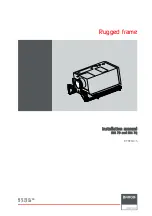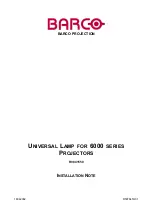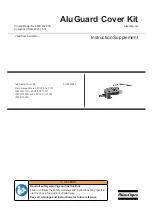
26
English
5. How to select tightening power and rotation speed
CAUTION
䡬
The selection examples shown in Table 2 should
be utilized as a general standard. As different types
of tightening screws and different materials to be
tightened are used in actual works, proper
adjustments are naturally necessary.
6. Mounting and dismounting of the bit.
(1) Mounting the bit
After inserting a driver bit, etc. into the keyless drill
chuck, firmly grasp the ring and tighten the sleeve
by turning it toward the right (in the clockwise
direction as viewed from the front). (See Fig. 8)
䡬
If the sleeve becomes loose during operation, tighten
it further. The tightening force becomes stronger
when the sleeve is tightened additionally.
(2) Dismounting the bit
Firmly grasp the ring and loosen the sleeve by
turning it toward the left (in the counterclockwise
direction as viewed from the front). (See Fig. 8)
CAUTION:
䡬
When it is no longer possible to loosen the sleeve,
use a vise or similar instrument to secure the bit.
Set the clutch mode between 1 and 3 and then turn
the sleeve to the loose side (left side) while operating
the clutch. It should be easy now to loosen the
sleeve.
NOTE
䡬
There is a plus driver bit and a minus driver bit
on both sides of the main unit.
The bits can be removed by pulling them forward.
After using the bits, make sure to firmly attach them
to the main unit again. (Fig. 9)
7. Confirm that the battery is mounted correctly.
8. Check the rotation direction
When the reversing switch is set to
, the drill
rotates clockwise when viewed from the drill rear.
When set to
, the drill rotates counterclockwise
(see Fig. 10). (The
and
marks are provided
on the body.)
CAUTION:
䡬
Make sure to firmly switch the reversing switch. If
it is not switched firmly, the drill may not rotate
even if the switch is turned on.
9. Switch operation
When the trigger switch is depressed, the tool rotates.
When the trigger is released, the tool stops.
䡬
The rotational speed of the drill can be controlled
by varying the amount that the trigger switch is
pulled. Speed is low when the trigger switch is
pulled slightly and increases as the trigger switch
is pulled more.
NOTE
A peep sound may be produced when the motor
is about to rotate; This is only a noise, not a machine
failure.
MAINTENANCE AND INSPECTION
1. Inspecting the tool
Since use of a dull tool will degrade efficiency and
cause possible motor malfunction, sharpen or re-
place the tool as soon as abrasion is noted.
2. Inspecting the mounting screws
Regularly inspect all mounting screws and ensure
that they are properly tightened. Should any of the
screws be loose, retighten them immediately. Fail-
ure to do so could result in serious hazard.
3. Cleaning on the outside
When the driver drill is stained, wipe with a soft
dry cloth or a cloth moistened with soapy water.
Do not use chloric solvents, gasoline or paint thin-
ner, for they melt plastics.
4. Storage
Store the driver drill in a place in which the tempera-
ture is less than 40°C and out of reach of children.
NOTE
Due to HITACHI’s continuing program of research and
development, the specifications herein are subject to
change without prior notice.
Information concerning airborne noise and vibration
The measure values were determined according to
EN50144.
The typical A-weighted sound pressure level does not
exceed 70 dB (A).
Wear ear protection.
The typical weighted root mean square acceleration
value does not exceed 2.5 m/s
2
.
Table 2
Rotating speed selection (Position of the shift knob)
Driving
Drilling
Metal
Wood
Wood screw
Machine screw
Use
1-5
1-5
H(High speed)
L(Low speed)
————
Cap Position
For 10 mm or smaller diameters.
for 5 mm or larger diameter
screws.
For 3.8 mm or larger nominal
diameter screws.
For drilling with a metal
working drill bit.
For 10 mm or larger diameters.
For 3.5 mm or smaller nominal
diameter screws.
For 4 mm or smaller diameter
screws.



































